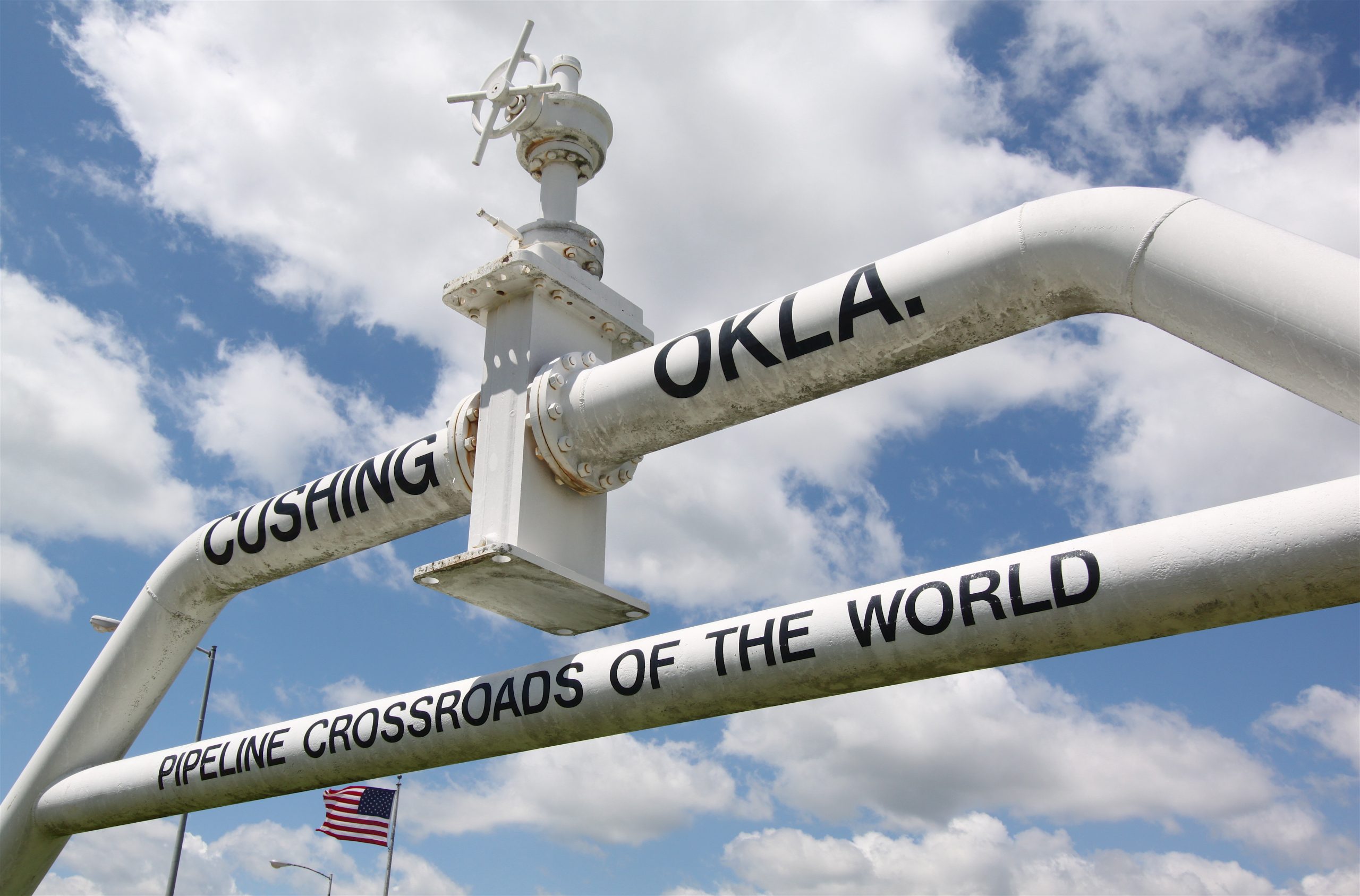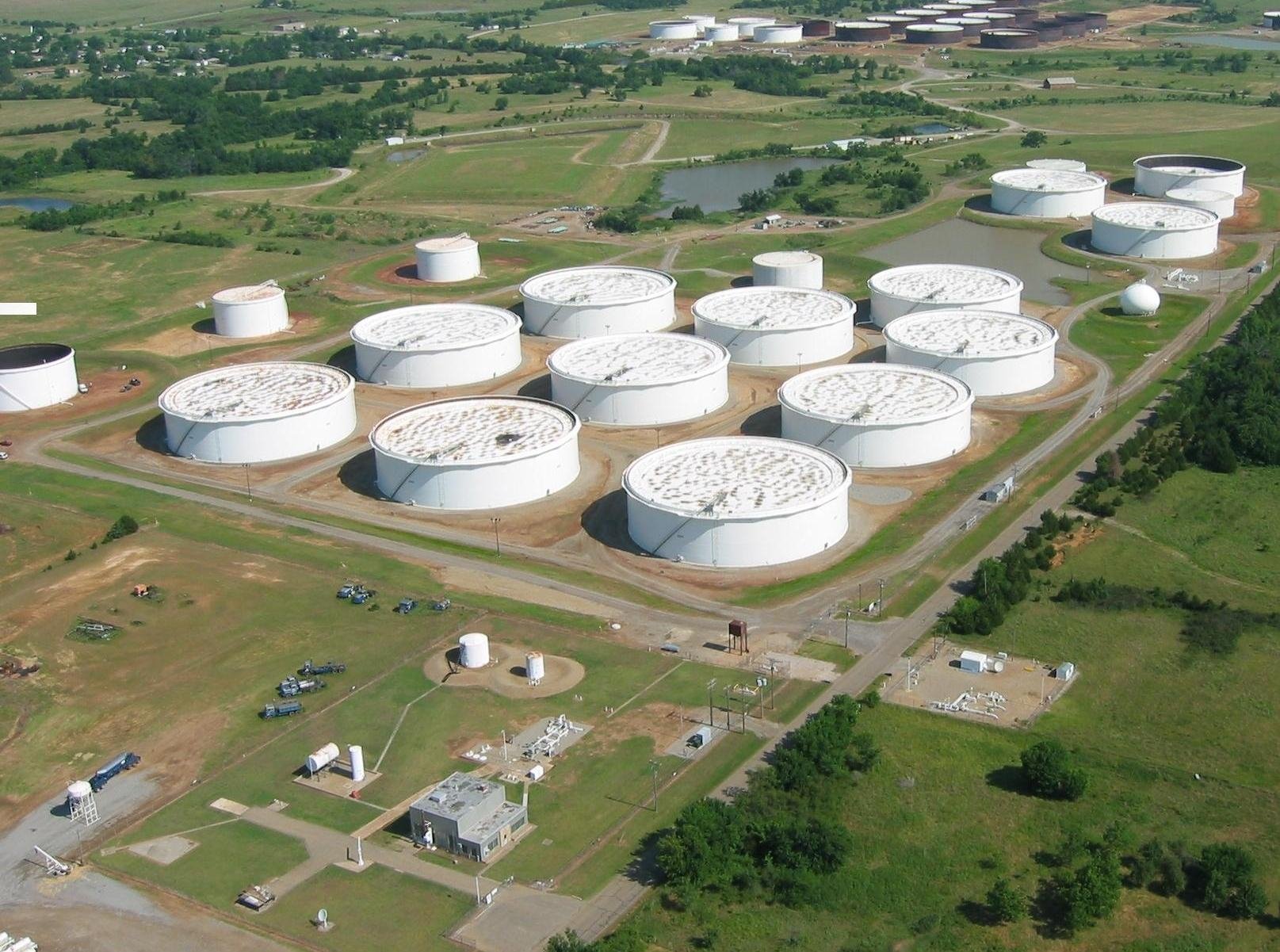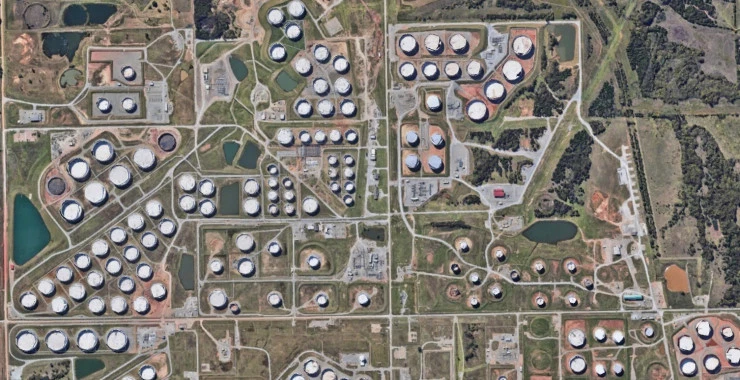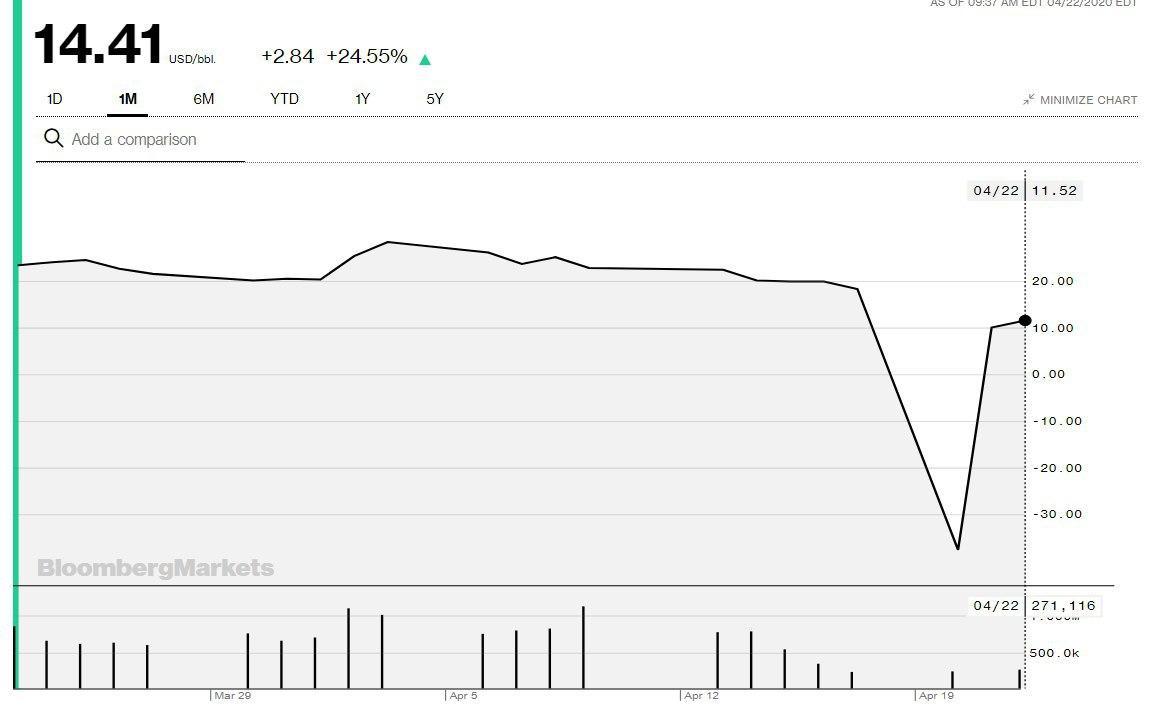On April 21st, the key US crude oil hub in Cushing, Oklahoma was 70% full, while this actually means that it is entirely full.
The remaining 30% are spoken for.
The US Secretary of Energy said he would call on the leaders of the US House of Representatives to finance the purchase of oil to replenish the strategic oil reserve. Dan Brouillette said it was legally possible to expand the strategic oil reserve to 1 billion barrels. But expansion will require even greater financial cooperation from Congress. The reserve, located in Texas and Louisiana, currently holds about 635 million barrels. and can accommodate another 77 million barrels. Where the extra storage space will come from remains in question.
Cushing is the largest crude oil storage hub in the USA and an important price settlement point for West Texas Intermediate (WTI) on the New York Mercantile Exchange (NYMEX).
It is the officially designated delivery point in the US where the physical delivery of the oil takes place, making it the most significant trading hub in crude oil in North America.
The hub has 90 million barrels of storage capacity where commercial companies are active participants in the market. The storage capacity has grown dramatically over the past few years and now accounts for 13% of total U.S. oil storage.
Cushing’s inbound and outbound pipeline capacity is well over 6.5 million barrels daily.
Oil storage became big business in 2008 and 2009, when the supply glut in the oil market led to situation where oil futures were higher priced than their spot price.
Many participants—including Wall Street giants, such as Morgan Stanley, Goldman Sachs, and Citicorp—turned sizeable profits simply by sitting on tanks of oil.
Institutional investors bet on the future of oil prices through a financial instrument known as oil futures, in which investors contractually agree to buy or sell oil at a set date in the future. Investors can choose to take profits or losses prior to the oil-delivery date.
It is about to become big business again, but because oil storage is so hard to find for all the excess oil due to the demand decrease.
At Cushing, if you buy oil, you need a storage tank to put it in, and for several weeks now, that storage has been getting steadily more full.
The scale and speed of the precipitous drop in oil demand has left the market incredibly oversupplied, and despite the best efforts of producing countries, that oversupply is weighing heavily on prices.
Crude oil at Cushing is exceptional. It is essentially the benchmark, and WTI crude turned negative there.
Cushing is something of an outlier among the major oil benchmarks, as it is not particularly close to either major production or consumption areas.
What it does have is a lot of physical infrastructure, with a wealth of pipeline connections and a commercial crude storage capacity that is unrivalled.
With demand down 30% worldwide, that leaves buyers of oil few options other than to stick crude in storage, and Cushing is the primary U.S. locale for that.
The tank farm has about 76 million barrels of working capacity, and around April 13th about 53 million barrels were being stored there, according to U.S. Energy Department figures.
But while the tanks are not full yet, they are fully leased out to producers and traders who will fill them soon.
In short, U.S. oil futures posted their largest one-day sell-off ever on April 20th as a result of an oversupplied market testing storage capacity. And the issue isn’t solved yet, since the price dip didn’t change anything regarding the massive lack of storage space.
Traders of other crude grades in other locations, notably the large US Gulf Coast market built around Texas and Louisiana, typically buy and sell oil at a differential to Cushing.
In this way, they rely on Cushing to act as a general barometer for world oil prices, and fine-tune the price via the differentials.
This breaks down when the setting price goes into the negative.
As an example, on April 20th, before the price went into the negative, there was trade reported in this MEH market at May WTI plus $7/barrel.
But when Cushing then crashes into negative territory and settles where it did at -$37.63/b, would it mean that MEH crude in Houston is really only worth $7/b more than this, which would still be below -$30/b. It has since recovered to $14.41, non-negative.
This creates a massive issue for US traders, who cannot rely specifically on the price designated in Cushing to sell and buy.
MORE ON THE TOPIC:










US simply has no storage capacity and its own self-induced problems will get worse as it unwisely prodded the ignorant Saudis to engage in a suicidal price war with Russia has now gone sour with devastating consequences for western economies at a time of COVID-19 which they have failed to contain.
Russia has huge storage reserves too!
What would the oil price discovery be if the Iranians shut down the straits of hormuz? Would it go to somewhat normal since it is already so low? Could all of this be a sort of preparation? The Sauds would be properly screwed and certainly nobody would care about that. That would be a good Israeli plot to further the Yinon Plan.
“Could all of this be a sort of preparation?”
Nope. If this were the case then the USA could have topped up their strategic reserve quietly without turning the economy into a dumpster fire. The administration is debating as we speak whether to go to congress for funds to top up the strategic reserve. The question now is whether they can afford to do this or if the money is better spent propping up the bond markets.
filled to the brim is just a temporary problem and it will be sorted – not to worry.
The US is about to receive a few more oil tankers filled to the brim from the suadis, so the storage will be off shore probably. Failing that, there’s always Lake Fubar.
The falling prices are decimating the shale oil industry, but who cares, they were and are polluting the local environment with no regard to the people in the community.
US admins have been using the oil price as a weapon, like they do with everything else. This weapon is about to shoot them in the foot. Hubris, don’tcha just love it?
but trump will save the better part of the shale business since he can’t let his buddies on wall street down being in hock to the tune of hundred of billions of bucks that they are. and the acreage the minnows are sitting on will be snatched up by the likes of exxon, chevron and then it will be business as usual.
natural gas is arguably more significant as regards electricity production—the US imports most of its gas from Canada; Russia exports gas to China and Europe
nice target for russian missiles…..